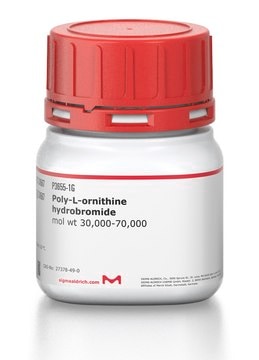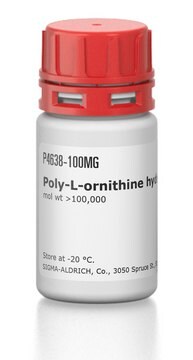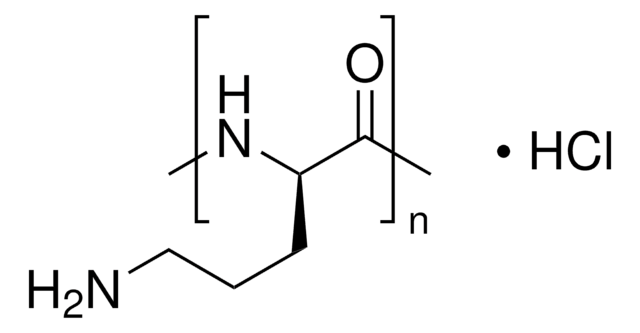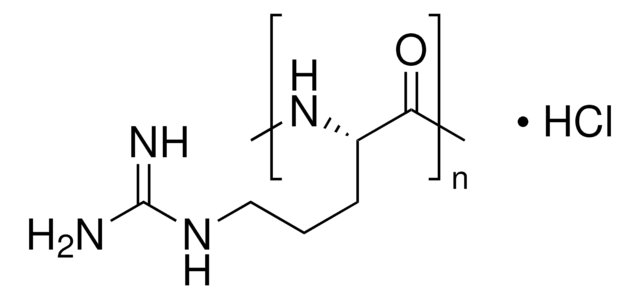P4538
Poli-L-ornitina
suitable for cell culture, Mol wt 5,000-15,000
Sinônimo(s):
L-Ornithine homopolymer hydrobromide
About This Item
Produtos recomendados
product name
Poli-L-ornitina, mol wt 5,000-15,000
forma
powder
Nível de qualidade
peso molecular
5,000-15,000
técnica(s)
cell culture | mammalian: suitable
cor
white to off-white
temperatura de armazenamento
−20°C
InChI
1S/C5H12N2O2.BrH/c6-3-1-2-4(7)5(8)9;/h4H,1-3,6-7H2,(H,8,9);1H
chave InChI
GWRQMKDBBHFVIZ-UHFFFAOYSA-N
Procurando produtos similares? Visita Guia de comparação de produtos
Aplicação
- Thermodynamic Characterization of Polypeptide Complex Coacervation.: The research investigates the thermodynamic properties of polypeptide complex coacervation, including the role of Poly-L-ornithine hydrobromide in these interactions. This study provides insights into the self-assembly processes of polypeptides, which are crucial for designing new biomaterials (Priftis et al., 2012).
Nota de análise
Outras notas
Código de classe de armazenamento
11 - Combustible Solids
Classe de risco de água (WGK)
WGK 3
Ponto de fulgor (°F)
Not applicable
Ponto de fulgor (°C)
Not applicable
Equipamento de proteção individual
Eyeshields, Gloves, type N95 (US)
Certificados de análise (COA)
Busque Certificados de análise (COA) digitando o Número do Lote do produto. Os números de lote e remessa podem ser encontrados no rótulo de um produto após a palavra “Lot” ou “Batch”.
Já possui este produto?
Encontre a documentação dos produtos que você adquiriu recentemente na biblioteca de documentos.
Os clientes também visualizaram
Artigos
Humankind has utilized protein materials throughout its existence, starting with the use of materials such as wool and silk for warmth and protection from the elements and continuing with the use of recombinant DNA techniques to synthesize proteins with unique and useful properties.
Nossa equipe de cientistas tem experiência em todas as áreas de pesquisa, incluindo Life Sciences, ciência de materiais, síntese química, cromatografia, química analítica e muitas outras.
Entre em contato com a assistência técnica













